With the Government’s Committee on Climate Change recommending no new homes are connected to the mains gas grid by 2025, induction hobs are only set to build on their sales success.

Harmony, from Westin, is an induction hob, with bridging function and integral downdraft extractor. It features a SEM 12 plinth motor and ducting to the plinth
They are already already a first choice for many consumers refurbishing their kitchen, as category manager of cooking for Whirlpool Dimitry Letsman points out: “According to the Houzz UK 2018 Kitchen Trends Study, 41% of homeowners included an induction hob as part of their kitchen renovation plans, with only 29% of consumers opting for a gas hob.”
Tina Riley, owner of Leamington Spa-based showroom Modern Homes and former retail chair of the KBSA, says this is reflected in her sales: “Gas hob [sales] are now very rare, unless consumers are opting for a range cooker.”
Sponsored Video
Efficiency understood
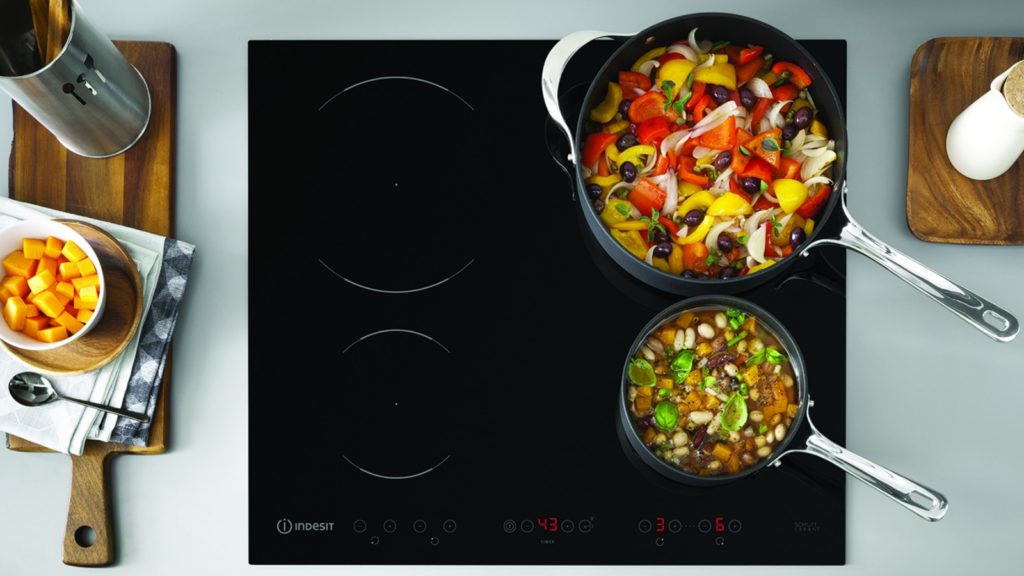
The Indesit Aria 600mm induction hob (VID 641 B C) features residual heat indicators and a child safety lock. The four zone hob also boasts a bridge zone
The energy efficiency benefits of induction hobs, with greater controllability and speed of cooking, is well understood by kitchen design professionals.
Brand manager of Indesit Sara Bazeley offers the reminder: “40% of the energy in a common gas hob is used to cook, whereas with induction 84% of the energy is used to cook.”
Kitchen designers have been able to pass this information on to their clients, encouraging sales.
But energy efficiency is not the only driver of purchases. In fact, the popularity of induction hobs can also be attributed to the design and ease-of-use cooking technology.
Keeping clean
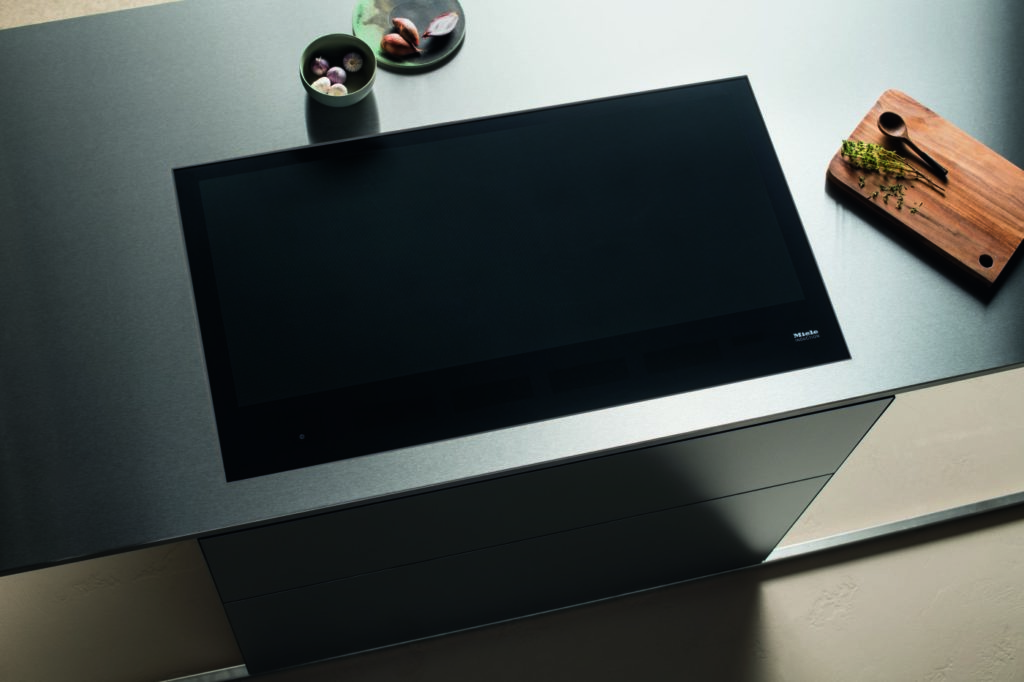
Part of Miele‘s Generation 7000 collection is the KM7897FL induction hob. It features full surface cooking, can track pans using SmartSelect technology and operates hoods through conn@ctivity.
With kitchens now an integral part of an ‘Instagrammable’ living space, there is a greater pressure for the working area to remain clean and clutter free.
Unlike the traditional gas hob with a complexity of burners, pan supports and control knobs, the induction hob is one-piece.
Dimitry Letsman of Whirlpool continues: “Cleaning is a necessity in the kitchen with open-plan living, creating greater pressure on keeping appliances pristine.
“Eliminating the need for elbow grease and time spent in the kitchen is a must-have for the time-challenged consumer.”
Integral extraction
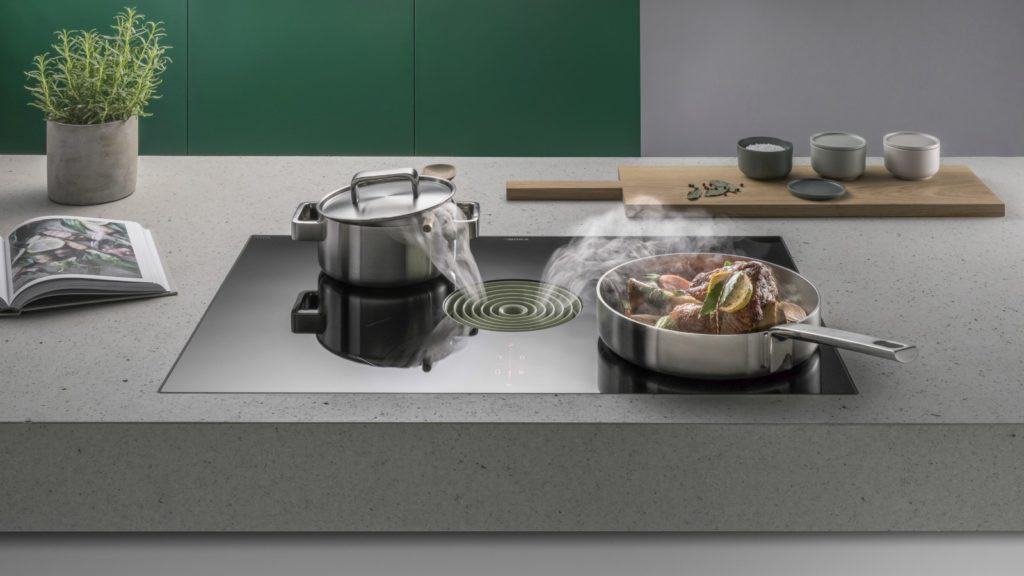
Bora Pure combines a four zone induction hob with centrally positioned extractort in a choice of colours. The hob is operated by touch control which is ‘invisible’ when it is in standby
The pared-down design is a must to meet the sleek-lined silhouettes of broken-plan kitchen schemes.
And where the induction hob also comes into its own, in terms of design, is for small kitchen spaces requiring a hob and extraction.
Enter the combined induction hob with integral downdraft extractor.
Product manager for kitchens at Miele GB Max McCormack continues: “Hidden, slimline hobs are still very much a leading trend in kitchens.
“It’s no surprise that our TwinInOne induction hob with integrated downdraft extractor is proving extremely popular, as is our SmartLine range of combi hobs with downdraft hoods.”
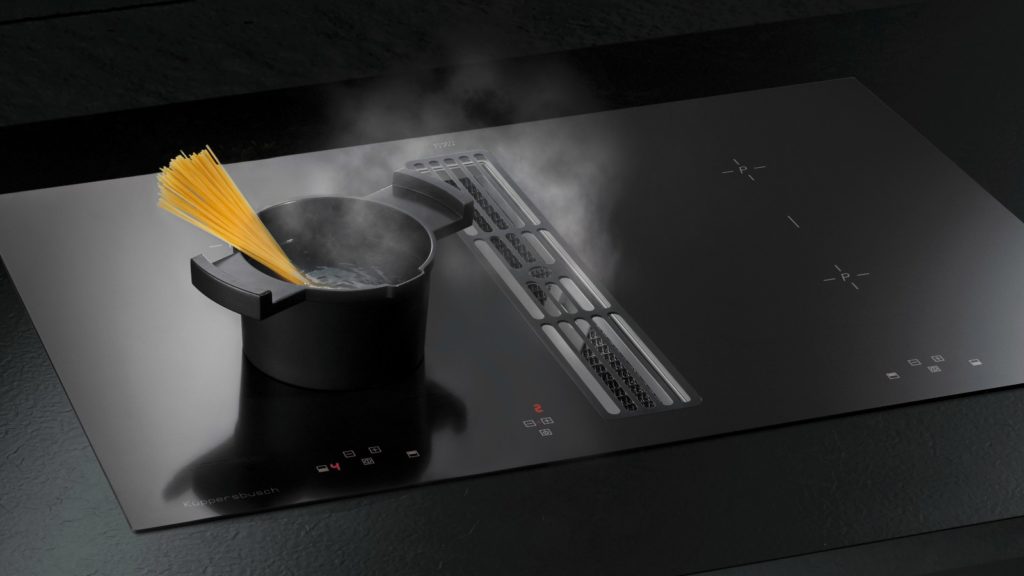
Measuring 800mm wide, the Premium+ KM18500 from Kuppersbusch is a two-in-one hob with 10 level power controls with bridging function. The extractor grid comes in a choice of seven colours
And his view is reiterated by business development manager for Kuppersbusch James Smith who adds: “Our fastest-growing induction model is our Premium+ KMI8500, a two-in-one 800mm hob with integrated extractor.
“Visually appealing, the flush-fitted induction model features a downdraft extractor and offers a seamless alternative to traditional wall-mounted models, ideal for where space is at a premium.”
Advanced cooking
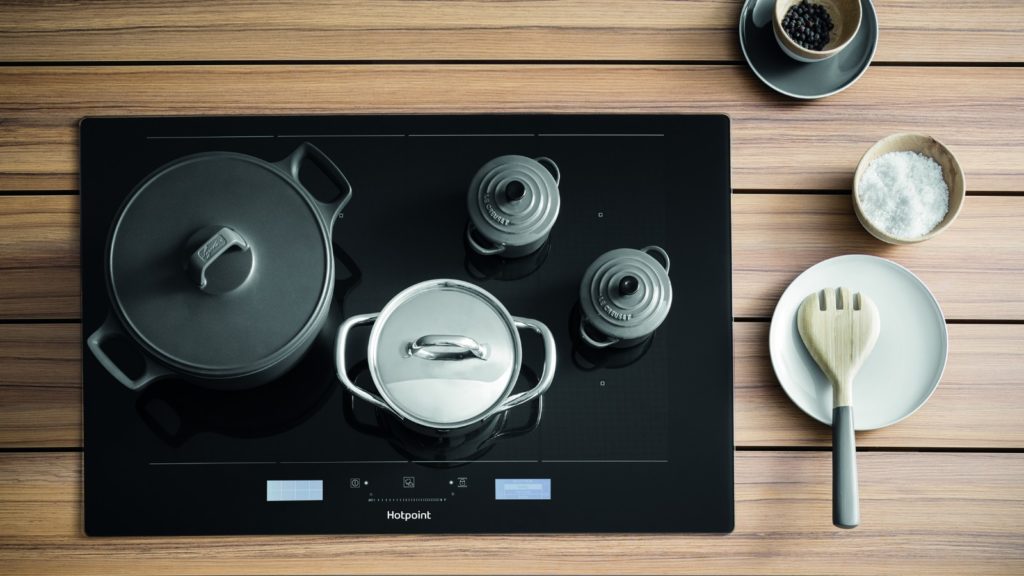
The ActiveCook induction hob, from Hotpoint, boasts three technologies My Guide, Active Heat and Total Flex. Active Heat offers four zones at pre-set temperatures, Total Flex is full surface cooking and My Guide is built-in advice
But of course where the induction hob wins through is the advanced cooking technology, which is important because “Research shows that only 22% of British consumers feel they have great knowledge of, and experience with, food and cooking, and that 27% of millennials are not interested in learning how to cook”, says brand manager of Indesit Sara Bazeley. She adds: “In addition, with an increasingly ageing population, simplicity and ease of use are critical.”
It has seen the development from keep warm models, through to overflow sensors and now even built-in cooking guides.
Head of brand at Hotpoint Jennifer Taylor highlights its ActiveCook induction hob boasts a guide: “My menu is there to assist with cooking programmes. My Menu guide users through the cooking processes with step-by-step instructions and assists in the perfect cooking of 63 recipes.”
Full surface cooking
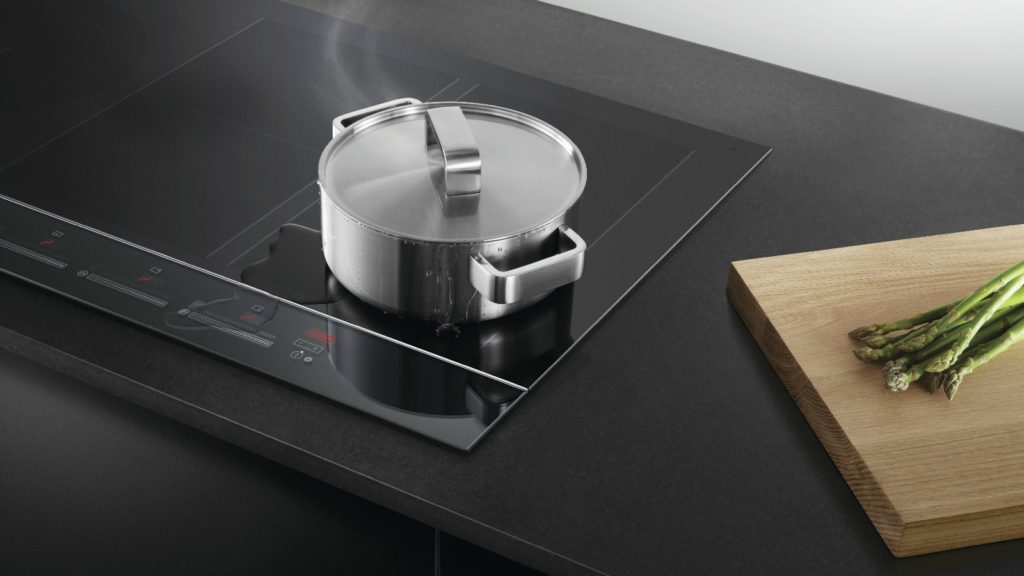
Fisher & Paykel‘s SmartZone CI905DTB3) offers a choice of five cooking areas. It features PowerBoost for intensive heat and GentleHeat function for slow, continuous simmering, as well as automatic pan detection
This ease of use is matched by the flexibility of the cooking surface.
While bridging technology, linking two small zones to create a larger cooking area, is nothing new, what may be less familiar is full surface induction.
It means fewer, if any, constraints for pan placement on the surface.
And with pan tracking, it means consumers can shuffle them around the hob without needing to change the temperature.
As part of its Generation 7000 appliances, Miele introduced zoneless induction hobs with pan tracking technology.
Max McCormick explains: “The hobs will provide even greater cooking flexibility, allowing pans to be placed anywhere on the hob without any temperature adjustments needing to be made thanks to SmartSelect technology with intelligent pan recognition.”
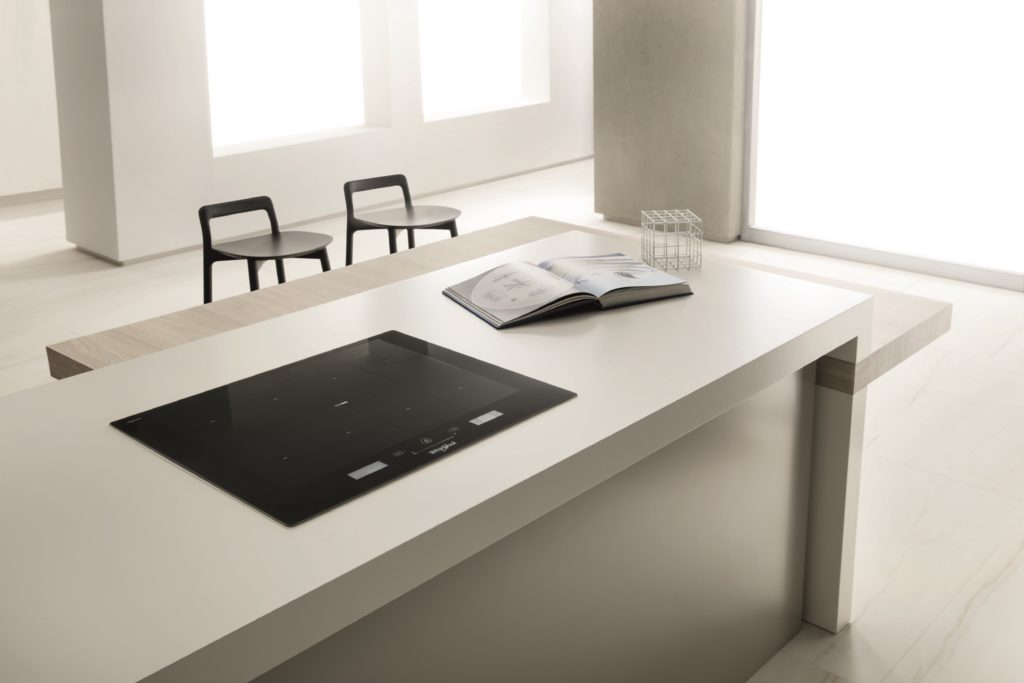
The Whirlpool SmartCook induction hob (SMP 778/C/NE/IXL) features full surface cooking and Chef Control which divides the hob into four pre-set temperatures. It also boasts built-in culinary expertise.
Hotpoint, Whirlpool and KitchenAid are among the manufacturers offering the option of full surface cooking, but the hobs can equally be divided into pre-set temperature zones.
Channel Controller of KitchenAid Lee Collett explains its Gourmet Induction Hob boasts 10 cooking zones which can be used as a single cooking area or divided zones: “The French Plaque function divides the hob into three or four zones, and activates them simultaneously at a pre-set power level.
“Pans can be moved from one area to another, without the need to adjust the power levels or settings, allowing the user to unleash their creative flair using similar techniques as a professional chef.”
Get connected
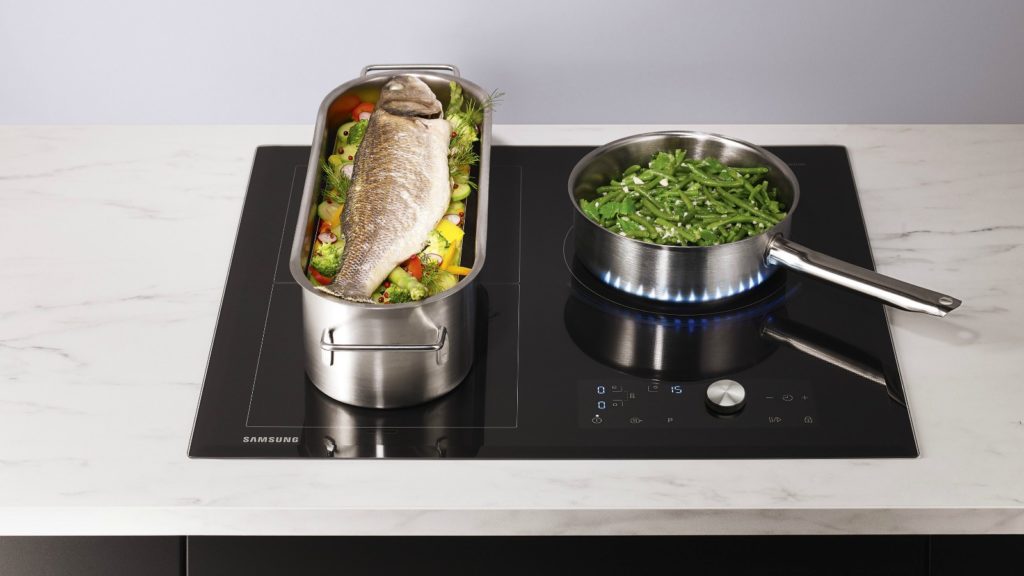
Featuring Virtual Flame technology to offer the visual control of a flame, the Samsung NZ6000K Induction Hob automatically connects and controls a compatible hood. It also features Wi-Fi operation to allow remote monitoring from a smartphone
But going forwards, arguably one of the greatest advantages of induction hobs will be there seamless integration with connected technology – something that cannot be achieved using gas.
Miele uses Conn@ctivity technology in its induction hobs, which sees them ‘speak’ to compatible cooker hoods controlling the level of extraction and powering them off when the cooking process is finished.
Sara Bazeley of Indesit adds: “At Indesit we expect to see connectivity in induction hobs develop, firstly in premium appliances, and then filtering through to more affordable areas of the market in the years to come.”
Growing accessibility
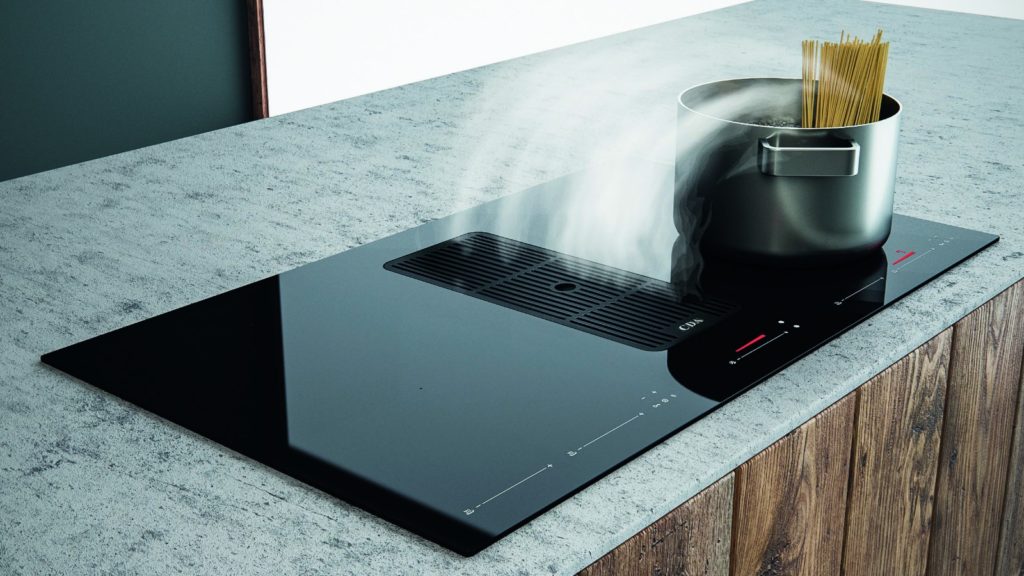
Combining an induction hob with an integrated three-speed extractor is CDA‘s HNE8 model. It has keep warm and simmer functions alongside overflow and overheat detection
And that’s possibly the challenge with induction hobs at the moment the accessibility.
Although the technology is available for all levels of the market, it is still more expensive than other options.
Dimity Letsman says: “Due to the initial cost of induction hob, they continue to be most popular among the most affluent households; 13% of households in socio-economic group A owns an induction hob, compared to just 3% in group E.”
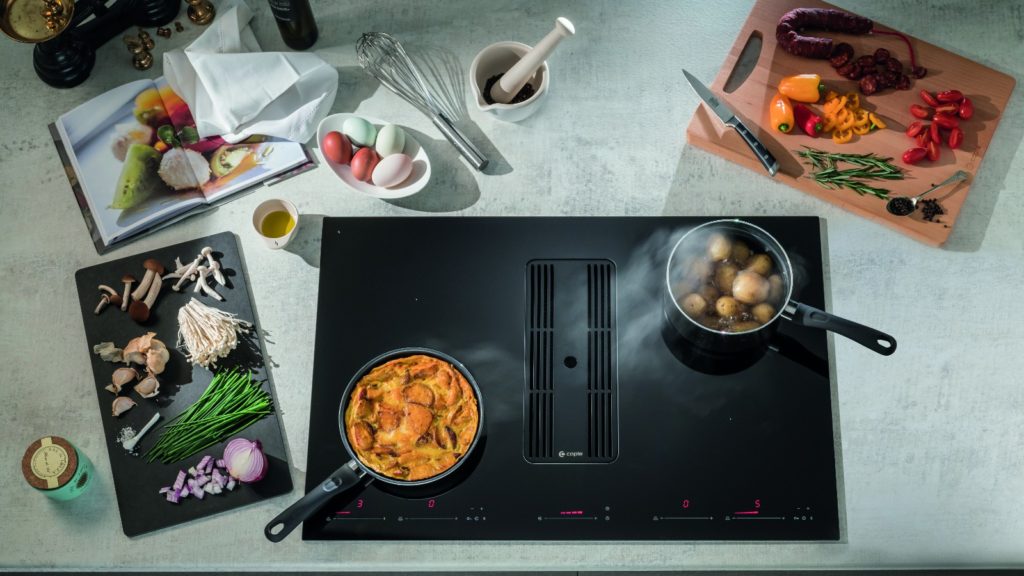
The DD935BK induction downdraft extractor hob, from Caple, features a 13 power level hob with four-speed hood. It features a bridge function connecting two zones together for a larger cooking area
But as greater pressure is placed on the consumer, whether from the David Attenborough effect of climate change, or by Government regulations, induction will be at the forefront of hob sales.
Jennifer Taylor of Hotpoint concludes: “With environmental concerns moving to the forefront of the consumers’ mind, induction will undoubtedly become the predominant type of hob preferred by customers going forward.”



